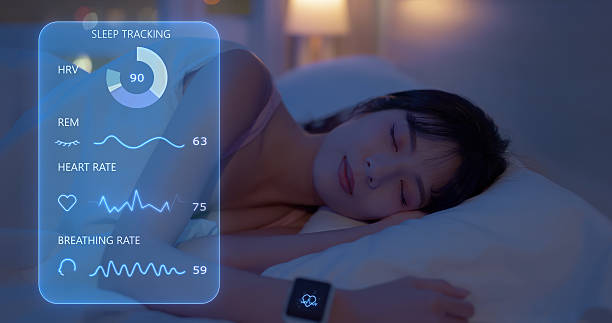Enhancing Sleep Quality with Wearables: A Scientific Approach to Restorative Health
Introduction
In our fast-paced, always-connected world, achieving restorative sleep has become a growing challenge. From excessive screen time to chronic stress, numerous factors disrupt our natural sleep cycles. Yet, as concerns about sleep quality escalate, innovative solutions have emerged—most notably, wearable technology. These smart devices are redefining how individuals approach sleep optimization, offering data-driven insights that empower users to take control of their nightly rest.
Sleep is no longer a mysterious, immeasurable phenomenon. Thanks to advancements in wearable technology, tracking and enhancing sleep quality is now accessible, affordable, and remarkably effective. This blog explores the scientific foundation, practical applications, and transformative potential of wearables in improving sleep and promoting overall health and wellness.
What is Sleep Optimization?
Sleep optimization refers to the strategic improvement of sleep habits, patterns, and environmental factors to achieve better sleep quality and duration. Unlike general advice such as “get eight hours of sleep,” optimization is a personalized process that adapts to individual needs, lifestyles, and physiological responses.
Key Goals of Sleep Optimization:
Enhancing sleep efficiency (the ratio of time spent asleep to time spent in bed)
Improving sleep latency (how quickly one falls asleep)
Reducing wake after sleep onset (WASO)
Maximizing time spent in deep and REM sleep, the most restorative phases
Promoting a consistent circadian rhythm
Wearable devices contribute to these goals by monitoring and analyzing vital metrics, providing users with actionable feedback.
Role of Wearable Technology in Sleep Tracking
Wearable technology—such as smartwatches, fitness bands, and specialized sleep trackers—collects physiological data through built-in sensors that monitor bodily functions continuously throughout the night.
How Wearables Measure Sleep Quality:
Heart Rate Variability (HRV):
Indicates autonomic nervous system activity
Reflects stress levels and readiness for rest or recovery
Resting Heart Rate:
Lower rates typically correlate with deeper, more restful sleep
Movement Tracking (Actigraphy):
Detects body movement to differentiate between sleep stages and wakefulness
Respiratory Rate and Oxygen Saturation:
Monitors breathing patterns to flag disturbances like sleep apnea
Sleep Staging:
Advanced wearables use machine learning to estimate time spent in light, deep, and REM sleep phases
Skin Temperature and Electrodermal Activity (EDA):
Measures subtle changes to gauge sleep depth and stress response
These metrics offer a comprehensive picture of an individual’s sleep architecture, allowing for tailored recommendations and continuous improvement.
Types of Wearable Devices
The market is saturated with sleep-focused wearables, each offering unique features and data insights. Here’s a breakdown of the most popular categories:
1. Smartwatches
Examples: Apple Watch, Samsung Galaxy Watch, Garmin Venu
Features: Sleep tracking integrated with fitness, HRV, oxygen levels, and smartphone syncing
Best For: Users seeking a multifunctional health and wellness device
2. Fitness Bands
Examples: Fitbit Charge, WHOOP Strap, Xiaomi Mi Band
Features: Lightweight design, long battery life, accurate sleep tracking
Best For: Daily users focused on fitness and recovery
3. Dedicated Sleep Trackers
Examples: Oura Ring, Withings Sleep Mat, Muse S
Features: In-depth sleep analytics, temperature tracking, guided meditations
Best For: Individuals serious about sleep optimization and biohacking
4. Smart Headbands and Earbuds
Examples: Dreem Headband, Kokoon Nightbuds
Features: EEG-based brainwave monitoring, soundscapes, sleep coaching
Best For: Advanced users seeking clinical-level insights
Scientific Evidence on Wearables and Sleep Quality
The effectiveness of wearables for sleep improvement is no longer anecdotal. A growing body of research supports their role in enhancing sleep habits and outcomes.
Notable Studies and Findings:
Journal of Clinical Sleep Medicine (2022):
Found that wearable sleep trackers, when used with behavioral coaching, significantly improved sleep duration and reduced nighttime awakenings in adults with insomnia.Sleep Health Journal (2021):
Highlighted the accuracy of wearables in tracking sleep stages, particularly when compared to gold-standard polysomnography. While not as precise, they offer sufficient accuracy for personal use.National Institutes of Health (NIH) Review (2023):
Emphasized the value of wearables in large-scale sleep studies and chronic disease prevention, citing their scalability and user compliance.WHOOP Performance Study:
Reported that users who monitored sleep metrics experienced better sleep consistency, higher HRV, and faster recovery times.
Wearables offer more than just passive monitoring—they promote behavioral change through feedback loops, nudging users toward better health and wellness decisions.
Tips for Using Wearables Effectively
To gain the most benefit from your device, it’s essential to integrate wearables mindfully into your daily routine. Here are key strategies for effective use:
1. Consistent Use
Wear the device every night to track patterns over time
Ensure sensors maintain contact with the skin for accurate readings
2. Set Personalized Sleep Goals
Use app-based analytics to identify sleep deficits
Adjust bedtime and wake-up routines based on feedback
3. Review Trends, Not Just Single Nights
Don’t overreact to one poor night—look at weekly or monthly trends for meaningful insights
4. Pair Data with Healthy Habits
Avoid caffeine and screens before bedtime
Create a relaxing wind-down routine aligned with your sleep score feedback
5. Use Alerts and Coaching Features
Enable smart alarms to wake you during light sleep
Follow app-based suggestions for stress management and circadian alignment
6. Calibrate Expectations
Recognize that wearables provide estimates, not clinical diagnoses
Use them as a guide, not an absolute authority
Conclusion
The integration of wearable technology into everyday health routines marks a transformative step in the pursuit of sleep optimization. By providing real-time, personalized data on sleep quality, wearables empower users to understand and enhance one of the most essential pillars of well-being—restorative sleep.
From tracking heart rate and movement to detecting sleep stages and circadian rhythms, these devices offer a scientific approach to sleep improvement that was once reserved for clinical settings. Whether you’re a biohacker, a fitness enthusiast, or simply someone looking to feel more energized, adopting a wearable for sleep tracking can deliver profound benefits across your health and wellness journey.
As the technology continues to evolve, so too will our ability to master the art of restful sleep—backed by science, supported by data, and optimized for life.



